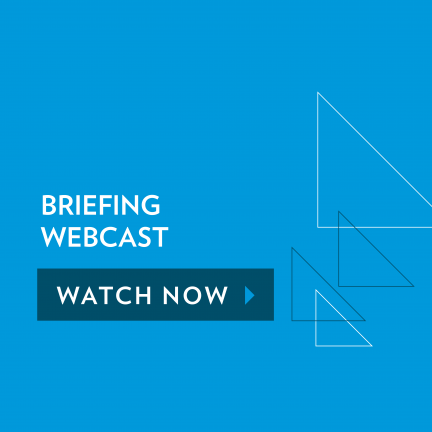Briefing webcast: data strategy and a cohesive approach to innovation investment
Harshana Amarasuriya|Global head of finance planning and analysis, data strategy, Clyde & Co
Paul Suffield|Managing director, Attest Group
Richard Brent|Head of content, Briefing
In this Briefing webcast we first hear from Mark Penlington, head of risk, resilience and internal audit at Irwin Mitchell. He explains that an enterprise risk framework allows a business to identify and map key areas of risk right across the organisation. Business risk is much broader than the legal and regulatory mix that may immediately spring to mind, comprising complex technology, diverse groups of variably engaged people, and of course all firm operations. With an enterprise risk framework, firms identify their inherent risks and build a framework for consistent interrogation and action, enabling comparing and contrasting of approaches in different parts of the business.
This supports prioritisation — increasingly important as the volume of possible change firms must consider and manage grows ever-more intense. Where should we focus our precious resources and considerable effort for maximum return? Compare competing projects on a similar basis, Penlington advises — which are the most strategically important? Appreciate how they connect — risks are interlinked. They will frequently draw on the same resources as well, so you need to use risk-based insights to prioritise people’s attention and build momentum. Use the tangible data about how successfully projects are being delivered to demonstrate or probe progress in line with these priorities. Are key milestones being met? If not, why not? Data unlocks insight into both opportunity and risk.
He says Irwin Mitchell has already developed a solid view of where to focus risk mitigation efforts using such insight. Technology also allows you to go deeper into the risk realm, really quite quickly; building understanding of aggregated risk, for example — the relationships between business areas — rather than seeing separate silos of concern everywhere. It’s easy to approach the data challenge with a rather siloed mindset; a match with the way it’s often managed within IT systems. But a firm’s dynamic client and talent agendas also support their data strategy goals. Risks are interlinked, and so is their management.
This activity needs appropriate buy-in to the ideas at all the right levels, including the very top of the firm — before cascading the key points out across the organisation to nurture a more risk-aware culture far and wide. Keep messaging as simple as possible here — develop specific key risk indicators (KRIs) and be ruthless about which you keep. What do you most need to know? One risk is that sometimes you can’t see the wood for the trees in a fast-moving environment, so take the organisation/board on an understandable journey towards eventual specific risk reductions (or tolerance). Build a compelling narrative for what’s needed.
At Clyde & Co then, there is a new role for data itself as a business-wide concern. Responsibility needs to span multiple functions, says Harshana Amarasuriya, who you could see as the custodian of the work. There is already much more sense of data as a strategic asset, particularly with the emergence of AI, other transformation-touting technologies and security frameworks that protect the appropriate levels of access to that value. Those leading the data charge need to understand real details of the teams involved, the use cases, and perceived business requirements in different areas. Clyde & Co now has data stewards from all functions feeding their respective perspectives and priorities through to this end — and a broad priority is for the tech stack to help genuinely useful data into the hands of key decision-makers in the most effective way possible.
This is all happening at a significant moment. With upgrades and moves to cloud on the cards to switch gears in several business areas, successful implementation simply requires better-quality data. This asset must be in the best shape it can possibly be for time-consuming projects to prove out their business case and big investments to pay off.
You can also watch this conversation in its entirety on the Briefing channel on Youtube.

Briefing webcast | A cohesive approach to innovation investment
Mark Penlington
Head of risk, resilience and internal audit, Irwin Mitchell
Harshana Amarasuriya
Global head of finance planning and analysis, data strategy, Clyde & Co
Paul Suffield
Managing director, Attest Group
Richard Brent
Head of content, Briefing

